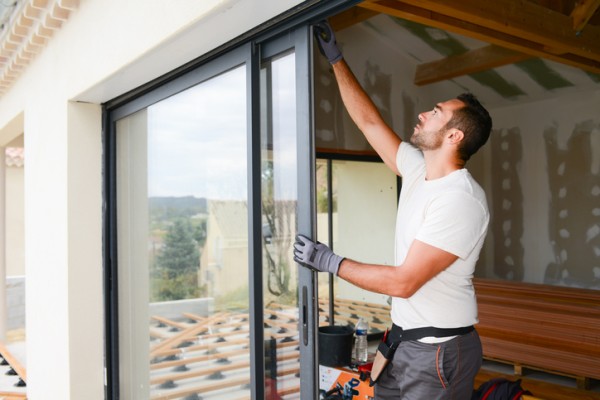
When it comes to building or renovating a home, few elements are more critical to energy performance, weather protection and comfort than correctly installed windows. With tighter regulations under NCC 2025 and growing awareness of sustainable building practices, getting window installation right is now a non-negotiable part of any quality construction project.
Here’s what builders, tradies and renovators need to know to meet the latest industry standards and avoid costly mistakes.
Plan ahead: Site preparation and product handling
Before a window is even lifted into place, the groundwork needs to be done properly.
Windows should be stored upright, off the ground, and protected from dust, cement splashes or direct sun exposure. Make sure all packaging is removed carefully and that no sealants or solvents come into contact with frames or glazing during handling.
Critically, each window must carry a label indicating its performance ratings, including structural capacity, water penetration resistance, air infiltration, bushfire (BAL) rating and energy efficiency (WERS). These labels must remain intact until handover.
Also check that all openings are square, level and meet the manufacturer’s tolerances. This will ensure a proper fit, help avoid air and water leaks, and allow the unit to function as designed.
Positioning and fixing: Accuracy is key
Proper placement matters. It’s surprisingly common for windows to be installed back-to-front, especially in busy builds. Most manufacturers provide visual indicators or text on the frame to show which side should face outwards. Confirm this before any fixing begins.
Once the frame is positioned, it should be supported and packed using corrosion-resistant plastic or steel packers. The sill must be completely supported to prevent sagging, and the frame must be plumb and level.
Sashes should remain closed during installation to help maintain the window’s structural integrity and alignment. This is particularly important for larger or heavier glazed units.
Sealing and weatherproofing: Meeting the NCC
Correct sealing is essential for long-term performance. NCC requirements have become more rigorous, particularly in relation to condensation management and energy efficiency.
Use flexible flashing membranes or expandable foam tapes around window heads and jambs to form an airtight and watertight barrier. Ensure all seals direct water away from the building envelope, and finish with a UV-stable external sealant.
For uPVC windows and other high-performance systems, sealing details are even more critical. Airtightness is often a key selling point, and poor sealing can compromise energy ratings, comfort and compliance. Foam tapes or pre-compressed seals are now widely recommended.
Protecting the product during construction
Once installed, windows should be treated with care. Frames and glass should be regularly cleaned during construction, especially if exposed to cement dust, grinding sparks or other contaminants.
Builders should avoid acid-based cleaning agents, which can permanently damage the surface. Instead, rinse any brickwork or cement render with clean water and use neutral detergents if necessary.
Always check that moving parts like sashes, locks, latches and rollers, operate smoothly before final fixing. Tracks should be kept clear of debris and any protective stickers or labels should remain in place until final inspections.
Post-installation checklist
Once installation is complete:
- Remove any packing materials and confirm all fixings are secure.
- Inspect seals for gaps, distortion or improper bonding.
- Clear drainage weep holes and check that water can escape freely.
- Retest all hardware for smooth operation.
- Leave performance labels in place until project completion.
Attention to these finishing details helps avoid callbacks and protects the builder’s reputation for quality.
Common mistakes to avoid
Some of the most common (and costly) mistakes during window installation include:
- Incorrect orientation: Installing the window with the exterior facing inward.
- Inadequate support: Leaving sills unsupported, leading to frame distortion.
- Poor sealing: Skipping flashing or sealing gaps with the wrong products.
- Ignored tolerances: Forcing windows into openings that are out of square.
- Product damage: Scratching or staining frames due to poor site protection.
Each of these can lead to issues with condensation, water ingress, acoustic performance and energy loss, all of which can be avoided with careful planning and execution.
Why quality installation matters
Today’s windows are designed to do more than just let in light. They play a vital role in thermal performance, bushfire compliance, weather protection, acoustic control and security.
Installing them correctly ensures:
- Long-term performance and durability
- Compliance with NCC 2025, AS 2047, AS 1288 and BAL ratings
- Retention of manufacturer warranties
- Reduced risk of condensation and mould
- Improved energy ratings and occupant comfort
In other words, good installation is just as important as good product selection.
Window installation is no longer just about getting it “close enough”. With tighter codes, higher performance expectations and better products available, builders must be precise, proactive and well informed.
From pre-installation checks to final sealing, every step matters. Done right, windows will contribute to a more comfortable, efficient and compliant home for years to come.





